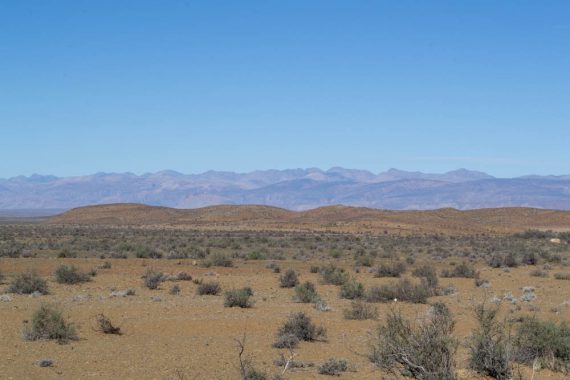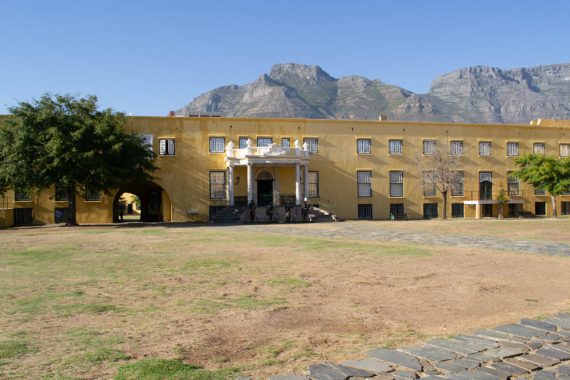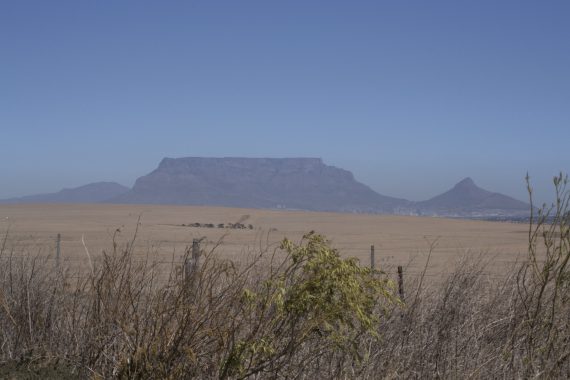“Water covers 70% of our planet, and it is easy to think that it will always be plentiful. However, freshwater – the stuff we drink, bathe in, irrigate our farm fields with – is incredibly rare. Only 3 % of the world’s water is fresh water, and two thirds of that is tucked away in frozen glaciers or otherwise unavailable for our use.”

© Jean Duvenhage 2018
What does water scarcity have to do with small business?
You might wonder what on earth has an article on water scarcity to do with small business. Our answer is straight forward: everything. Kanetwen has been developing manuals on water and wastewater treatment for 15 years now. During that time, we became more and more concerned about the water situation in our country. We started telling family and friends and whoever we encountered that there was cause for concern. People listened politely and all of us (we included) just went on with our lives.
Dr Anthony Turton
Then in 2010 the Council for Scientific and Industrial Research suspended Dr Anthony Turton with immediate effect before he could make a speech in which he would have spoken about the dangers of the water quality in South Africa. He warned that this would cause “social instability” to grow. Although many of us talked about what had happened to him and spoke about the unfairness, many actually missed his message. Nothing was done about the water quality and very few people spoke up about it.
Then the service delivery protests came. Times Live quoted Municipal IQ as saying that 94 % of service delivery protests were violent in 2018.
Water Scarcity in Cape Town

© Jean Duvenhage 2018
Then came Cape Town. After three consecutive dry years, the city council announced that it was running out of water. This from a municipality which ranked # 1 as far as Performance Results for South Africa’s 8 largest cities. How was this possible? Day Zero was around the corner. The city launched a media campaign like you could not believe and the disaster was averted. But not before restrictions came down to a two-minute shower, flushing the toilet once per day, washing a load of dishes and regular drinking, cooking, cleaning and tooth-brushing. Business and industry had to reduce their use of municipal drinking water by 45 % and agricultural users had to reduce their water use by 60 %.
Where drought had always been an agricultural problem, it became everybody’s problem this time around. We cannot attest to what happened on the ground in Cape Town, but can you imagine? How does a hairdresser curb water use by 45 % without influencing their income? How does a car wash curb water use by 45 %? Sure, they invest in new equipment. But who has that kind of money when you did not plan for it in advance? How does construction continue without water? Let’s go just a little bit outside of town. How do mines operate without water? What happens when the income drops because there is no water?

© Jean Duvenhage 2018
This was not only a problem in Cape Town. Even in Gauteng small business owners were complaining that the drought had impacted their businesses. Not small business owners that are dependent on agriculture but small business owners like the guy who installs carports. He complained that he had no business because it wasn’t raining – people did not feel like protecting their vehicles.
Water Scarcity and the Rest of the World
We started seeing articles about the water crisis in Cape Town in international news. But something interesting happened. Water scarcity around the world started coming to light. This is not only a South African problem. By no means. Vox published an article in which they claimed that “By 2040, most of the world won’t have enough water to meet demand year-round”. They report that not only Cape Town was having problems. Other cities listed include London, Sao Paolo, Jakarta, Istanbul, Tokyo and Mexico City. Some of these are in developed countries!
Water Scarcity Leads to War
In December 2009 Steven Solomon published his book “Water: The Epic Struggle for Wealth, Power, and Civilization”. Here Solomon claims that in the 21st Century wars will be fought over water. He writes: “Consider what will happen in water-distressed, nuclear-armed, terrorist-besieged, overpopulated, heavily irrigation dependent and already politically unstable Pakistan when its single water lifeline, the Indus river, loses a third of its flow from the disappearance from its glacial water source”.
But then we read an article in Newsweek of 24 April 2015 that the scary thing is, the world is already at war over water. They list the wars that are or have been fought recently over water: The Mesopotamian War in Syria with Isis, Turkey vs Isis, India and Pakistan, to mention but a few.
Water Scarcity and Urbanisation
The thing is water quality and water scarcity has never been something that people in cities think too much about. You can just open a tap and the water is flowing. So why worry? Drought has been the farmers’ problem and that is a world away from the city. After all, we find our milk on the shelf, not from a cow!
Lindiwe Sisulu, Minister of Human Settlements, Water & Sanitation in South Africa, tweeted on 5 January 2020: “The amount of water available per person is decreasing as the population grows, which is why we need to constantly raise consciousness to preserve what we have.”
With an urban population of 65,85% in 2017 according to Statista, somewhere along the line we lost contact with reality as far as water scarcity is concerned.
Worldometers reports that South Africa’s population has grown from around 15 million people in 1955 to 59 million people in 2020. Our water resources did not increase. Zambia is a very sad example. Renewable water sources per capita in Zambia (m3/inhabitant/year) has declined from about 32 000 m3 per year in 1962 to just above 5 000 m3 per year in 2017. Zambia had a population of about 10 million people just before 2000. In 2020 Zambia has a population of 18 126 515 people. According to African Vision of Hope “Zambia has hit a water and food shortage crisis”.
Do not make a mistake. Water scarcity is the problem of every citizen on earth – developed or developing. We need to wake up and start planning.
How can one small business make a difference?
But how can one small business make a difference, you ask? Have you ever heard how does one eat an elephant? The answer is, piece by piece. You can make a difference drop by drop. It takes one drop of water to make a bucket overflow. It might be the drop that you saved.
Benjamin Franklin said that “if you fail to plan, you are planning to fail”. Here is a very good example of that. We need to plan now how we can make our businesses less water dependent. Because when Day Zero arrives, it will be too late to start planning.
In the coming weeks we will look at different options open to businesses to save water.

